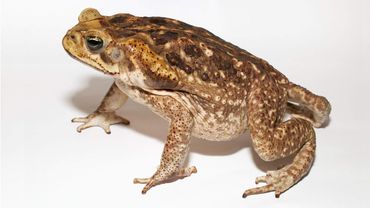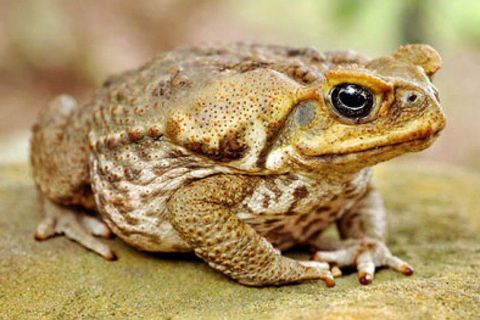Cane Toad Removal
About
Cane Toads
The Cane Toad is a very adaptable amphibian. Its native habitats comprise humid, subtropical forest and woodlands, with a nearby water source. They reside mainly on land, using the water only for breeding and spawning. With man’s environmental activities and a dwindling natural habitat, this toad will venture out and can be found in a variety of habitats, from gardens to construction sites. They are very hardy, and can adjust to any temperature except for the extreme cold. They can live even with the loss of 50% of their body water.
If your pet bites or swallows a Cane Toad, it will become sick and may die -- take it to the vet right away! Symptoms of Cane Toad poisoning in pets include excessive drooling and extremely red gums, head-shaking, crying, loss of coordination, and sometimes convulsions.
Naturally, the cane toad is a South and Central American amphibian species. But it has been introduced into a number of regions, as a pest controller and killer. In Puerto Rico, it successfully cut down the local rat population. It was introduced for a similar purpose in Australia, Jamaica, the Philippines, Fiji, New Guinea and even the U.S.A. In the U.S.A., these toads were introduced in Florida, Hawaii and Louisiana, out of which they have flourished very well in Hawaii but in Florida, are regarded as a pest.
The cane toad is active at night. They hide in crevices, niches and depressions during the day, to avoid predators. They are ravenous predators themselves, with a reputation for eating anything that can fit in their mouth. Natural prey includes insects like ants, honeybees, lizards, frogs, worms and beetles. They eat fish, small rodents and birds too and will swallow their prey whole. They have been known to steal dog and cat food from unwatched containers. Even their young ones are not safe, as cane toads have been observed eating young cane toads and tadpoles. They hunt based on sight and sense of smell. Tadpoles eat algae and small aquatic micro-organisms, sometimes even cane toad eggs.
The Cane toad moves quite rapidly when it wants to, in short but fast hops. It can sit upright and will puff up its lungs, in order to make itself look bigger, to frighten off a predator. But its most deadliest quality is its poisonous toxin, bufotoxin. The large paratoid glands of the toad produce this venom and it is distributed along the body. So for an unsuspecting predator, taking a bite of the toad, can result in a mouth full of poison that is deadly to the extreme. It affects the heart directly and will kill in 15 minutes. There have been numerous cases of pet dogs and cats dying from fiddling with a cane toad. Even the eggs and tadpoles are poisonous. If severely threatened, the toad will squirt or eject the venom, for a short distance. If this enters the eyes, nose or mouth or even on the skin, temporary blindness, swelling and pain will occur. Its poison spitting habit and skin is a very powerful deterrent to most predators.
Along with eating and being poisonous, cane toads are notoriously prolific breeders. Their mating age is dependent on size and location. Male cane toads emit a loud, purring trill noise to attract females, who don’t emit noises. The fight for an eligible female is rough, the male catches the female in the armpits to stake his claim, bigger toads will shove off smaller ones to get a female. Fertilization is external and in the water. An estimated 8,000-35,000 eggs are laid at a time. The eggs appear as a long sticky string and float on water. Within 24-72 hours, the eggs hatch as tadpoles, who congregate together. They grow very rapidly into toadlets within a month.


